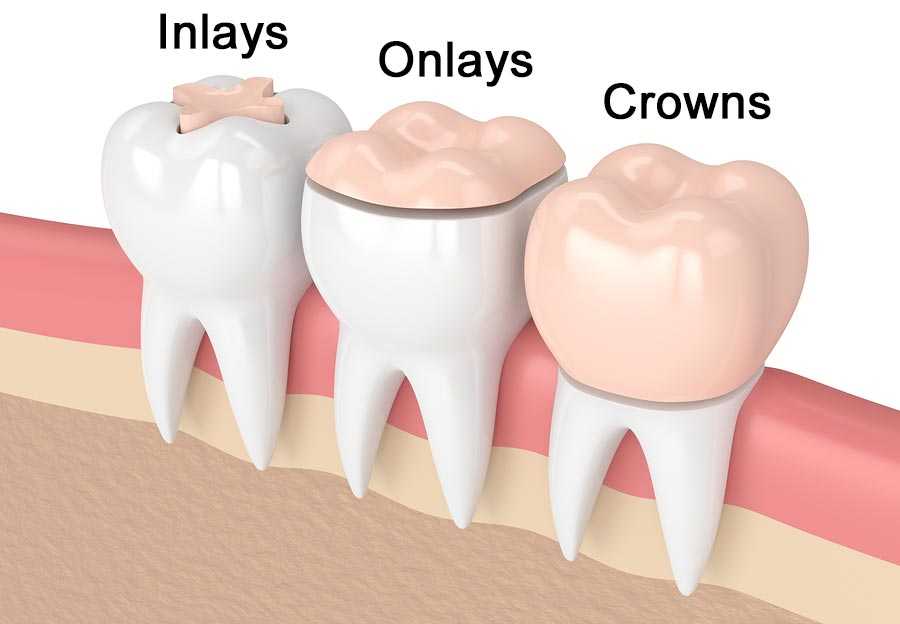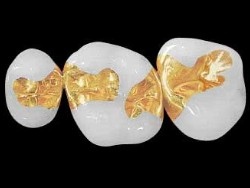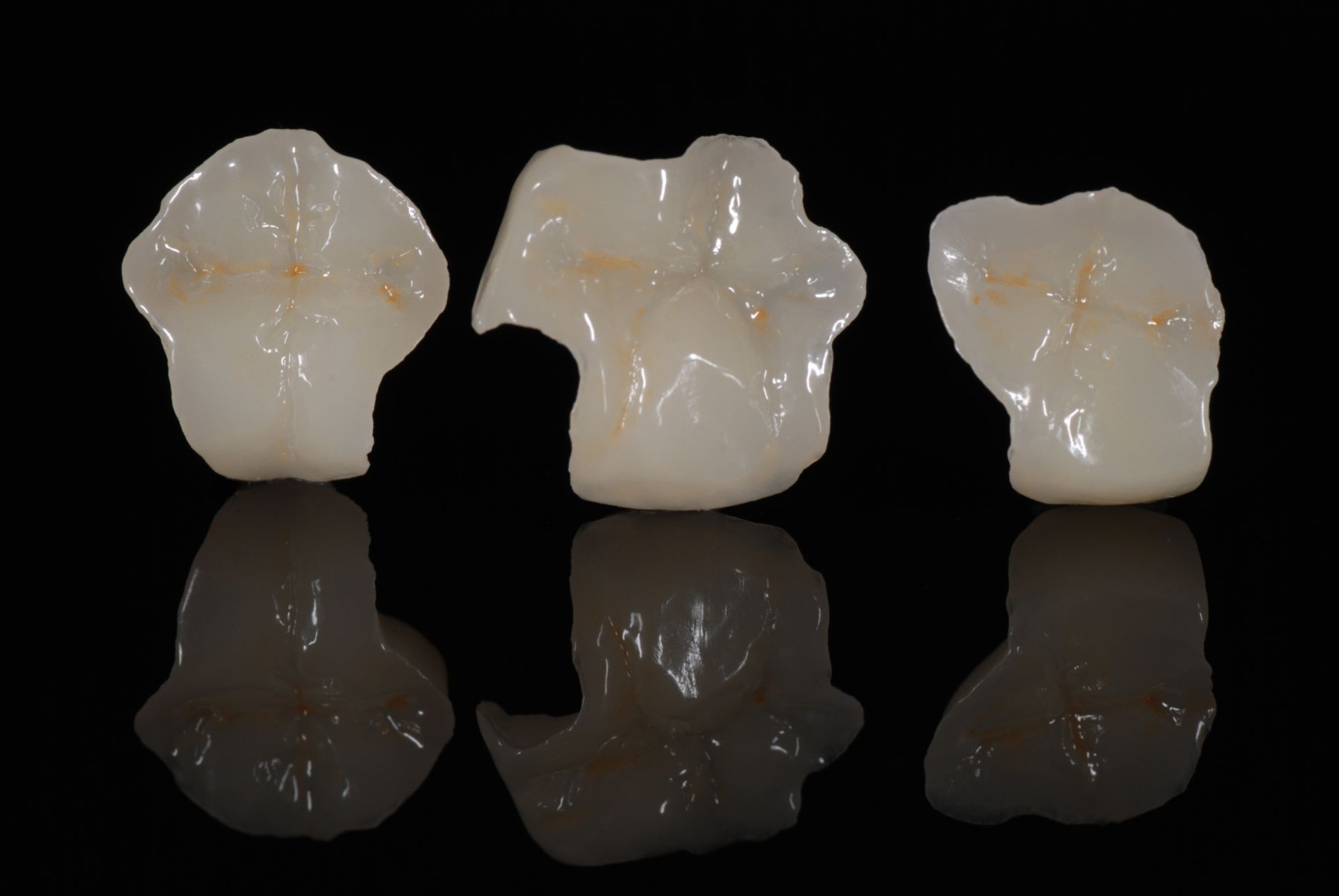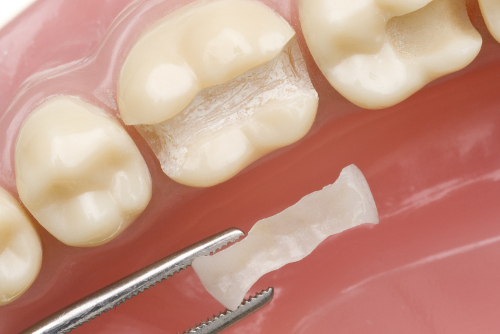- Dentistry Mosonmagyaróvár
In the case of severe caries, the removal of the damaged areas can lead to a loss of tooth substance, which can no longer be adequately and permanently repaired with conventional dental inlays.

In such cases, or if a large piece of the tooth has broken off, for example, the tooth can be restored with an inlay or onlay that is custom-made from an impression and fully individualized. Inlays are a kind of transition between a tooth filling and a crown: They are usually larger and more resistant than traditional fillings, but they do not cover the entire tooth surface like crowns.
Inlays are used when the tooth gap or tooth loss does not reach the top of the tooth, eliminating the need to cover the entire occlusal surface. In contrast, a tooth gap that extends across the entire occlusal surface can be treated with an onlay that is larger than an inlay.

It is extremely tissue-friendly and resilient, does not discolor and, thanks to its antibacterial properties, can prevent the growth of bacteria that cause tooth decay. It is easy to smooth on the tooth and perfectly seals the edges. Its lifespan is excellent but its price is slightly higher due to the gold and its colour, which is quite different from the tooth, means it is not suitable for all applications.

(e.g. made of porcelain or pressed ceramic): also very resistant and due to their tooth-like color and transparency, they offer excellent aesthetic results.

Consists of several materials and combines the positive properties of the components. One of the most commonly used inlays is the GC Gradia inlay, which is made of plastic and ceramic and, in addition to its color and transparency, is as hard as teeth.
After the treatment, the patient does not need to take any special measures at home. The same dental and oral care measures are recommended as for healthy teeth or teeth with traditional fillings.
Dental inlays can be required for tooth decay and fractures with excessive tooth loss as they are a much more durable and safe solution than traditional dental fillings and can restore the tooth’s anatomy without the need to grind down additional, intact tooth parts.
The treatment does not cause pain because the preventive drilling of the teeth is performed under anesthesia.
Inserts can be made from a variety of materials – each has its own advantages over the other. The choice of the right dental inlay is made together with the dentist, taking into account the characteristics and location of the tooth to be treated, as well as the patient’s financial means and needs.
Treatment with dental inlays takes more time than traditional dental fillings, but the result is much more durable. In order to make an inlay or onlay, an impression must first be taken for the dental technician to work with (this can take a few days). The dental inlay can then only be inserted in a second session after the restoration has been made. Pending final bonding, the tooth is covered with a temporary rubber-like filling that can be easily removed without altering the shape of the tooth prepared for placement.

Fill out the form, click the login button, and we will contact you soon.
Dr. Bekő Gabriella
Implanmed © 2022. All rights reserved!